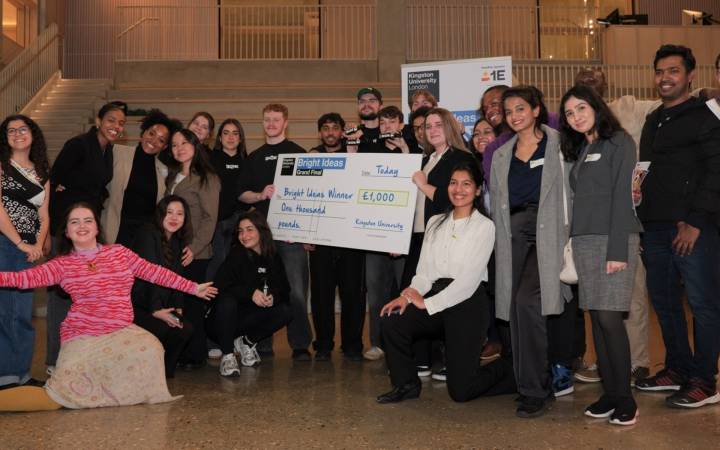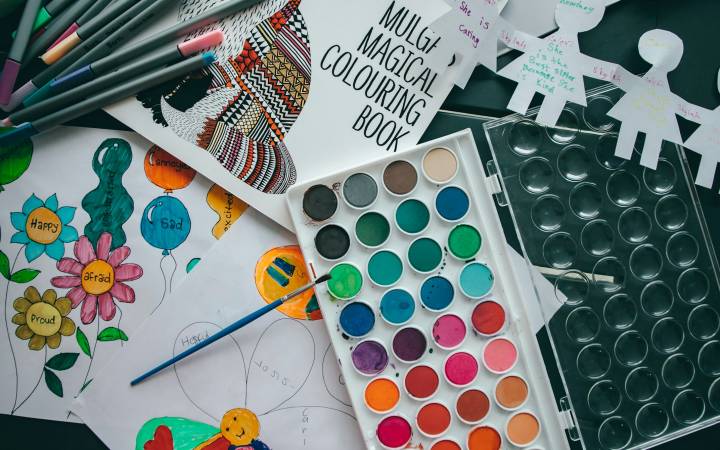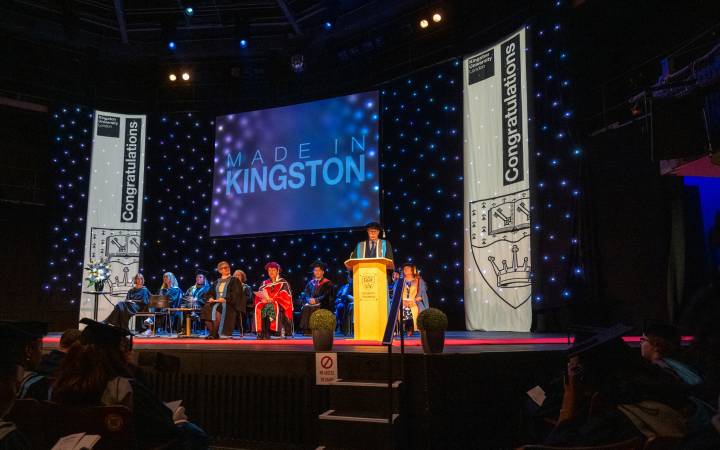Kingston School of Art interior design postgraduate student projects address challenges of marginalised communities in London
Posted Monday 6 February 2023
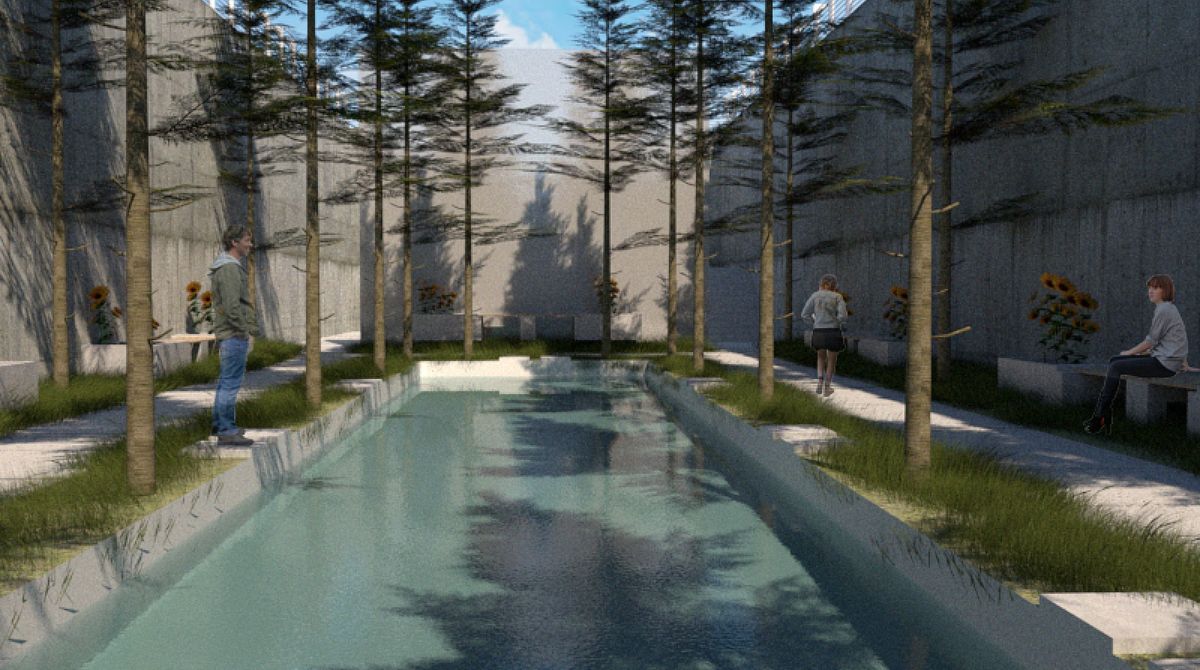 Sofia Koulta's project centred around the experiences of Ukrainian people relocated to London following the outbreak of war in their homeland, and how this affected their mental health.
Sofia Koulta's project centred around the experiences of Ukrainian people relocated to London following the outbreak of war in their homeland, and how this affected their mental health.
The creation of a tranquil space for Ukrainian refugees and a music-based collaboration centre to tackle the postcode rivalry of street gangs were among the final-year projects showcased by Kingston School of Art's Interior Design MA students.
The postgraduate students were challenged to produce interior design-led solutions to problems affecting marginalised communities. Initially they focused on people living in three multicultural communities in London – Dalston, Peckham and Tower Hamlets – exploring themes of community involvement, personal experience and collective discussions.
The second stage of the project asked the students to focus on individual design proposals, taking their learnings and research out of the studios and lecture halls at Kingston School of Art and to examine real people and real issues.
Sofia Koulta's project was centred around the experiences of Ukrainian people who had relocated to London following the outbreak of war in their homeland and how this affected their mental health. Her idea was to create a physical, peaceful space, a garden that could contribute to the healing process through nature at an underused site near Marble Arch where the sensorial elements of their family weekends could be reflected.
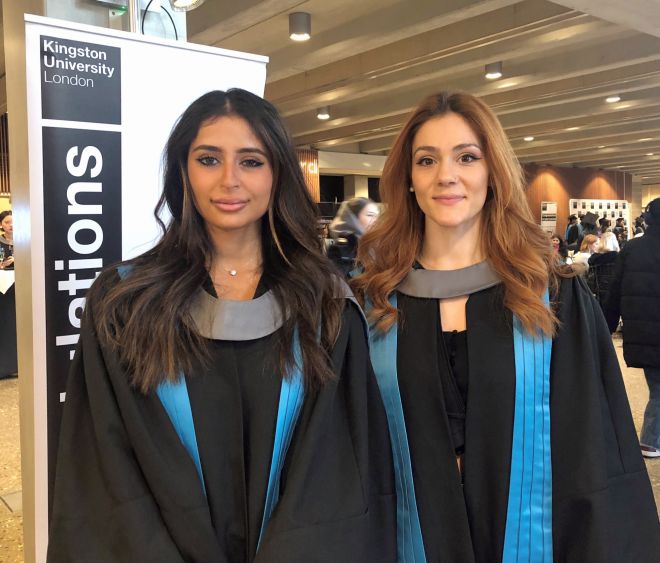 Sabrina Said and Sofia Koutla graduated in January at a ceremony at the Rose Theatre.Connecting with Ukrainian refugees through friends and via Facebook groups, Sofia researched their lives and culture and identified how spending time in nature was important to many Ukrainian people. "I used elements from recreational spots in Ukraine like lakes and parks, utilising pine trees and sunflowers – their national flower," she said. "London is a busy and often very hectic city, so creating this space was a way to help people contemplate and find their own peace, in the middle of the roundabout, next to the fountain amongst the trees."
Sabrina Said and Sofia Koutla graduated in January at a ceremony at the Rose Theatre.Connecting with Ukrainian refugees through friends and via Facebook groups, Sofia researched their lives and culture and identified how spending time in nature was important to many Ukrainian people. "I used elements from recreational spots in Ukraine like lakes and parks, utilising pine trees and sunflowers – their national flower," she said. "London is a busy and often very hectic city, so creating this space was a way to help people contemplate and find their own peace, in the middle of the roundabout, next to the fountain amongst the trees."
Mental health became a key theme of Sofia's project, which led to her learning more about Post Traumatic Stress Disorder (PTSD), stages of trauma and how nature can contribute to recovery. Informed by discussions with experts, such as a phycologist dealing with refugees and their experiences, invited in to talk to the students, Sofia ensured her designs avoided any potentially triggering aspects, while ensuring she paid attention to colours, noises and circulation within the space she designed.
Fellow graduate Sabrina Said's project examined a very different part of urban life – responding to the conflicts that arise between street gangs. Having grown up in West London, Sabrina wanted to focus on her local community and young people who felt forgotten by traditional infrastructures, with cuts to youth services leading to a lack of integration within close neighbourhoods. Her solution was to create a space in which these groups of young people, mostly formed by geographical postcode, could come together to make music.
To avoid conflict, Sabrina designed the creative hub to be accessed through two separate doors. Once the users enter the space they can collaborate in separate studio spaces, connected by a large glass partition. "These young people have the same stories, the same backgrounds, the same interests – my idea was that if we soften postcode rivalries, young people can come together to make music," she said. "This would reduce violence, build connections and create networks. There is so much creative talent in this area - rappers, writers and producers who feel like society doesn't really care about them."
As part of Sabrina's project, she created a short film exploring these locations in an abstract way influenced by her background in fine art, capturing secret locations and found sound during a typical night on the streets of West London. "I wanted to demonstrate how the same area can have such a different atmosphere depending on whether you visit during the day time or the night time," she said.
Gihan Karunaratne, Interior Design MA senior lecturer at Kingston School of Art, said one of the most important elements of the course was the involved design reviews, where students explain their ideas to peers and invited academics, researchers and practitioners of different fields. Mr Karunaratne assembled a strong community of professionals from around the world to lend their expertise to the students' developing designs.
"MA interior design at Kingston University challenges ways of thinking about the governance of human settling, mobility, and placemaking," he said. "The course examines hidden activity and untold stories of adaptation, negotiation and contention by individuals and communities. This helps reveal the sentiments, resourcefulness and agency of those traditionally identified as statistics within the dominant development narrative or seen by institutions as powerless beneficiaries. Our students delivered theoretical and plausible creative solutions that demonstrated a real understanding of the multifaceted complexity of issues facing communities today."
- Find out more about studying Interior Design MA at Kingston University.
- Find out more about Kingston School of Art.
Contact us
General enquiries:
Journalists only:
- Communications team
Tel: +44 (0)20 8417 3034
Email us

